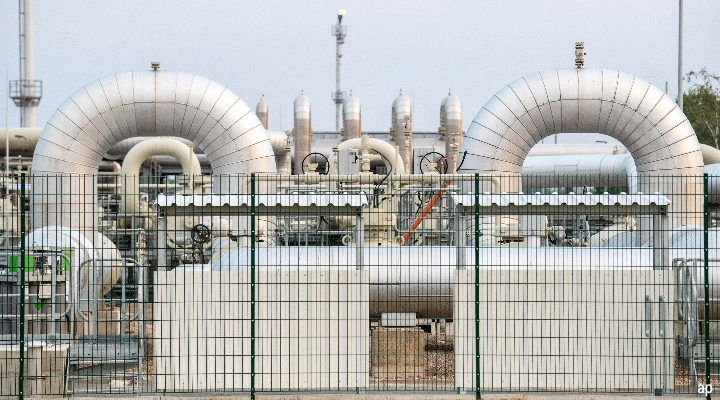
August has not been an easy month for capital markets. On August 22 the euro plummeted to a new record low against the US dollar, and sterling has been following suit.
Since then, the European common currency has fluctuated around parity with the greenback. The euro also marked a new record low against the Swiss currency on that day at 0.958 francs.
The energy crisis has played a clear role, just as it has on inflation and bond yields. But above all, it is the relative strength of the US dollar that is setting the tone, and when compared with European currencies, the Fed's comparatively rigorous action against high inflation has proved supportive.
Clear Words in Jackson Hole
Last month, central bankers from around the world gathered in Wyoming’s Jackson Hole.
There, Fed chair Jerome Powell left no doubt in his speech that the central bank would fight high prices with any means, even if that meant "pain" for households and a restrictive policy stance for some time. "The historical record cautions strongly against prematurely loosening policy," the central bank chief stressed.
Tiffany Wilding and Allison Boxer, economists at asset manager PIMCO, say: "with inflation projected to moderate to a still above-target pace, we believe the Fed will deliver additional outsize tightening this year and then keep rates on hold even as the US economy slows into 2023."
And then there’s the role of the US currency as a safe haven. Most of the major currencies weakened against the dollar recently without experiencing an "energy shock," according to Deutsche Bank's research team, referring to the plight of the European gas market.
"We have pointed to short-term capital inflow data in to the US as evidence of the dollar safe-haven dynamic but it is worth highlighting another data point showing just how powerful the safe-haven demand has been: the massive rise in the usage of the Fed’s overnight reverse repurchase facility. Investors are currently placing more than $2 trillion dollars in overnight liquidity with the Fed, a more than $1 trillion rise since this time last year," the bank says.
No End in Sight For Europe's Energy Crisis
The energy crisis continues to have a firm grip on Europe. Compared to February, European gas prices have increased almost ninefold, World Bank data reveals. In comparison, the 43% increase in the US market seems quite moderate.
On the Dutch TTF, the most important continental European hub for gas trading, quotations have climbed to a high of EUR 360/MWh. By comparison, on February 23, a megawatt hour still cost just under EUR 76.
Moreover, with the war in Ukraine continuing, Russian state-owned Gazprom remains an unreliable supplier of natural gas for the continent. Last week, Moscow said Nord Stream 1, a pipeline that supplies Germany, will be suspended again for maintenance work. Berlin doubts whether deliveries will be resumed, however.
Some countries like France have already stopped relying on Russian Gas. Gazprom cites alleged outstanding payments from the Engie Group from July as the reason, but the French company rejects this claim.
That said, natural gas prices have come down from their highs in the last two weeks. Rising imports from Norway and high levels in European gas storage facilities provided some relief. TTF quotations dropped to around EUR 240/MWh recently. And, the European Union met its gas storage target – for caverns to be 80% full by November 1 – two months in advance.
Recession Fears Rise in Europe
The consequences are still to be felt. Skyrocketing energy costs are certain to plunge Europe into recession, Steven Bell, Columbia Threadneedle Investments' chief economist for the EMEA region, says.
Given the mix of inflation, the potential recession and geopolitical risks, European investors are shying away from risk, and equity markets have been under pressure.
Companies are still showing resilience, however. The second-quarter earnings season is nearly over, and sales results have generally been better than expected. However, a closer look reveals weakness in specific areas, Seema Shah of Principal Global Investors, says.
Earnings growth for the S&P 500 slowed to 8.8% from 11.4% growth in the first quarter. 78% of earnings reports exceeded expectations and beat earnings estimates by 6%. And, when broken down by sector, it appears that the strength in the index was primarily due to the energy sector.
Despite the positive earnings season, ongoing challenges point to an increasingly difficult economic environment, which is likely to limit the resilience of earnings in the second half of the year, Shah say.





























